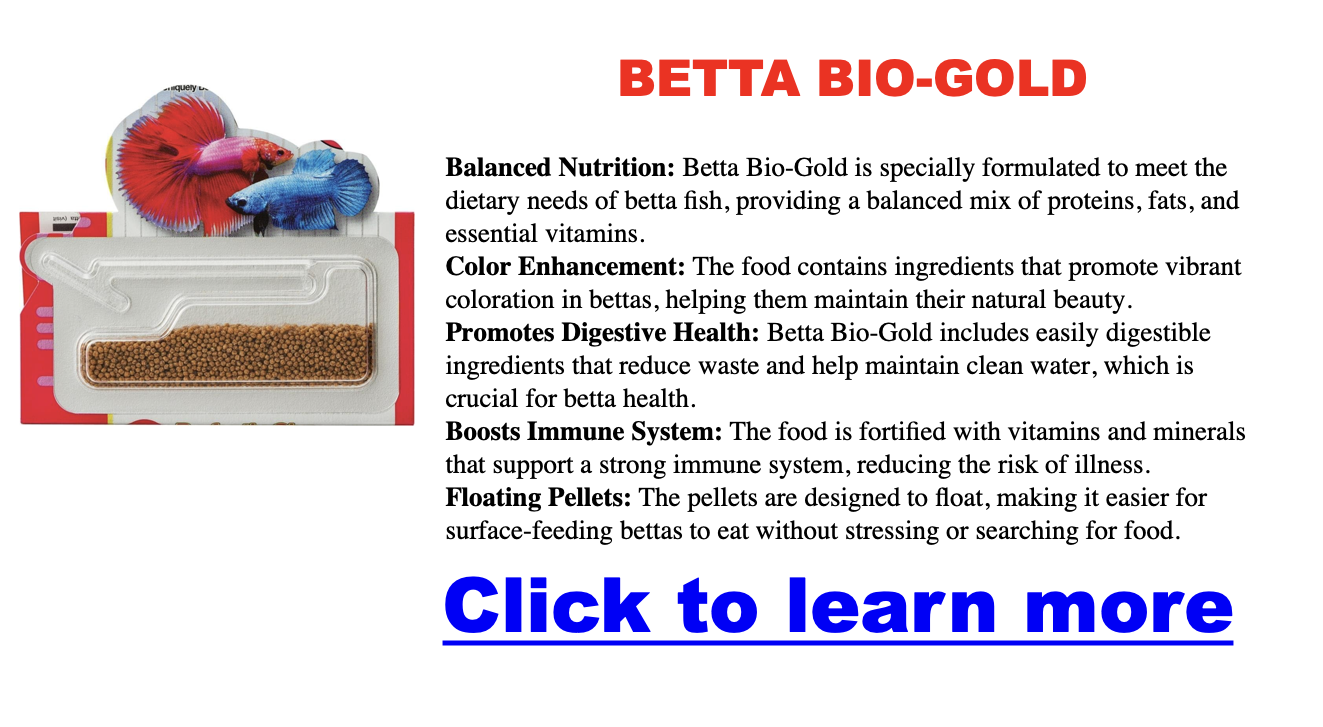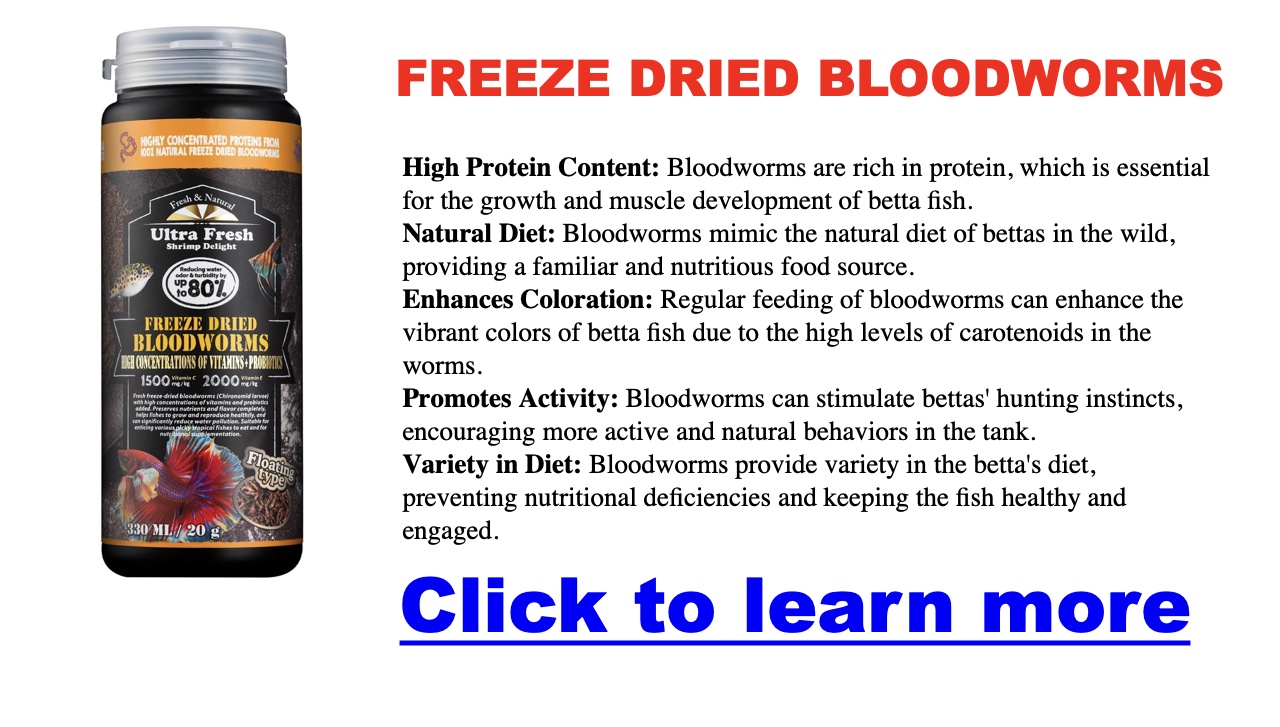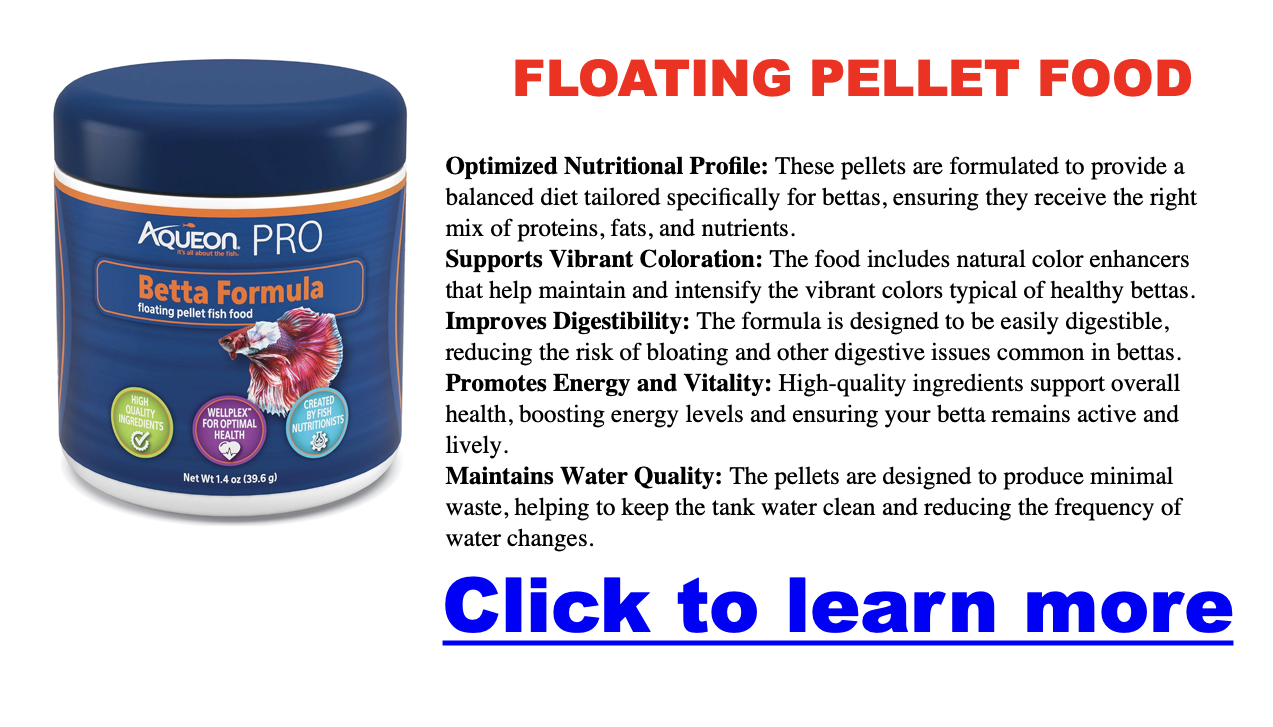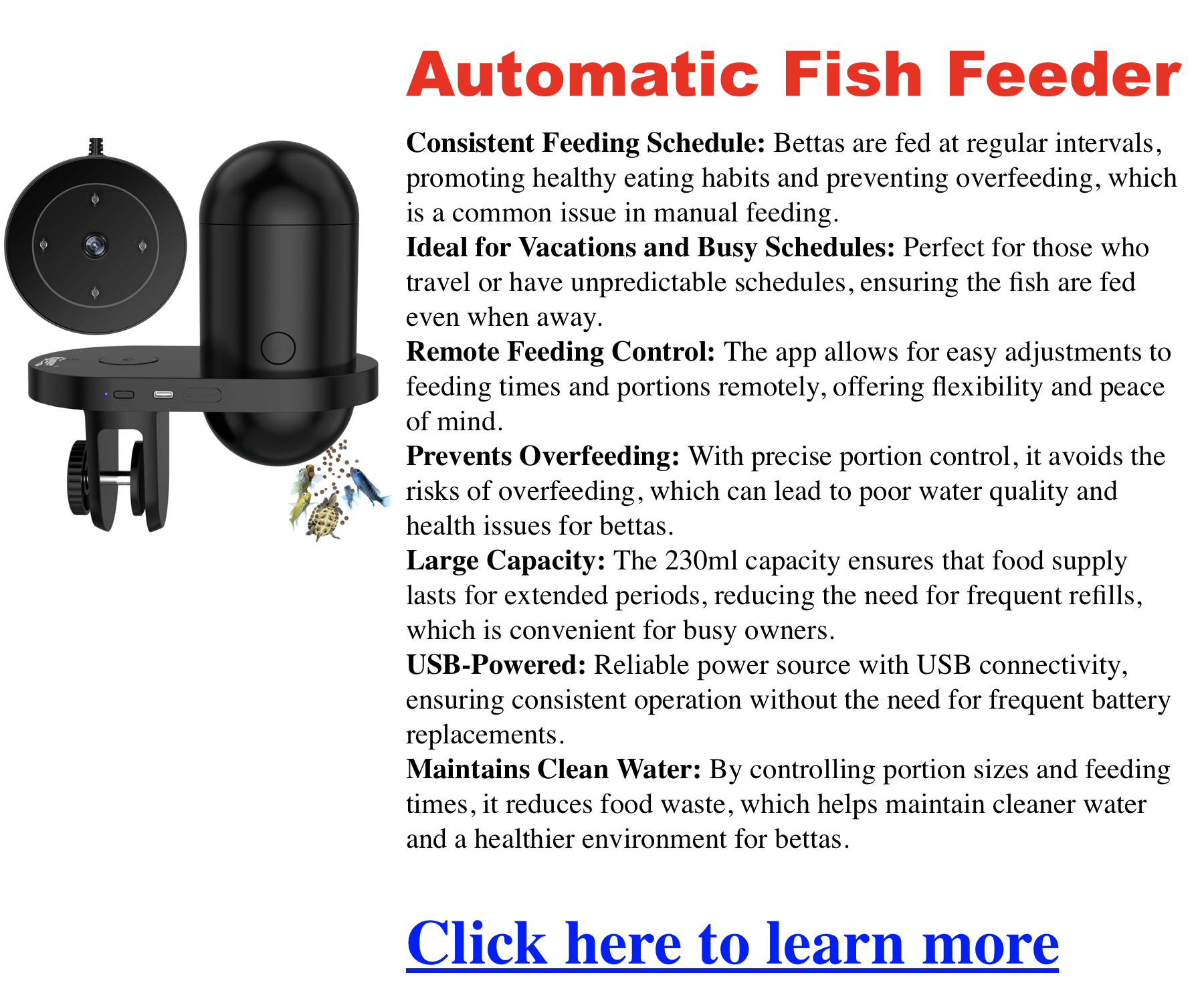Betta Fish Food
Have you ever admired a betta fish, marveling at its flowing fins and mesmerizing colors? These aquatic jewels are renowned for their vibrant hues, from fiery reds and oranges to deep blues and purples. But did you know that the secret to maximizing your betta’s color potential lies in its diet? That’s right, what your betta eats can significantly influence the intensity and vibrancy of its colors.
Overfeeding is actually the #1 cause of swim bladder disease, bloating, and even early death in bettas. That bloated belly isn’t a sign of a well-fed fish—it’s often a sign of trouble. Many bettas suffer simply because their owners don’t know the correct portion sizes, food types, or feeding schedule. If you’re unsure, you’re not alone—but you’re also taking a risk. That’s exactly why I recommend every betta owner get their hands on this guidebook. It’s the blueprint to raising a healthy, active, and long-living betta.
Click for the pellet that gave my betta the boldest color boost, especially reds.
Each betta fish possesses a unique genetic makeup that determines its base color. However, these colors can be muted or intensified depending on several factors, including diet. Specific nutrients act as color enhancers, boosting the production of pigments within the fish’s body.
Nutritional Needs for Optimal Health and Color
Click here for my favorite premium-grade blood worms
To thrive and display their most brilliant colors, bettas require a diet that’s high in protein, moderate in fat, and low in carbohydrates. Key nutrients to look for include:
- Protein: The building block for muscle and tissue growth, including the pigments that create their colors.
- Carotenoids: Natural pigments in certain foods contribute to red, orange, and yellow hues.
- Vitamins and minerals: Needed for health and immune function, indirectly impacting color vibrancy.
Best Foods for Betta Color
Click here for our favorite Betta Fish Food Guide Book
| Food Type | Examples | Color Enhancement | Feeding Frequency |
|---|---|---|---|
| High-Quality Pellets | Hikari Betta Bio-Gold, Fluval Bug Bites, New Life Spectrum Betta Formula | Overall color vibrancy | Daily (main diet) |
| Freeze-Dried Foods | Bloodworms, Brine shrimp | Reds, oranges | 1-2 times per week |
| Frozen Foods | Mysis shrimp, Daphnia | Blues, greens | 2-3 times per week |
| Live Foods | Mosquito larvae, Brine shrimp | Overall health and color | 1-2 times per week |
| Color-Enhancing Flakes | Spirulina-enriched flakes, Krill flakes | Blues, greens, reds | As supplement to main diet |
| DIY Treats | Homemade food with spirulina or beta-carotene | Customized color boost | Occasionally as treats |
 High-Quality Pellets: The Foundation for Vibrancy
High-Quality Pellets: The Foundation for Vibrancy
High-quality pellets should be the foundation of your betta’s diet, providing a balanced mix of protein, vitamins, and minerals.
Look for pellets with color-enhancing ingredients like:
- Carotenoids (e.g., krill, shrimp): These naturally occurring pigments enhance reds, oranges, and yellows.
- Spirulina: This blue-green algae is rich in phycocyanin, which can deepen blues and greens.
Tip: Choose reputable brands with high-quality ingredients to ensure your betta gets the best nutrition possible.
Live and Frozen Foods: Nature’s Color Boosters
Click here for the food that made my betta vibrant and happy
Live and frozen foods offer a more natural and enriching feeding experience for your betta, providing essential nutrients and stimulating their hunting instincts.
- Bloodworms: Packed with carotenoids, bloodworms are a fantastic treat for intensifying reds and oranges.
- Tip: Feed as a treat 2-3 times weekly to avoid overfeeding.
- Brine Shrimp: These tiny crustaceans are another excellent source of protein and carotenoids, supporting overall health and vibrant colors.
- Tip: Hatch your brine shrimp or buy high-quality frozen varieties.
- Daphnia: These tiny water fleas contain nutrients that enhance blue and green hues.
- Tip: Feed live daphnia for enrichment and color-boosting benefits.
Other Frozen Food Options
| Frozen Food | Color Enhancement | Nutritional Benefits | Feeding Tips |
|---|---|---|---|
| Bloodworms | Enhances reds and oranges | High in protein, iron | Thaw before feeding; offer 2-3 times a week |
| Brine Shrimp | Boosts overall color vibrancy | Rich in proteins, fatty acids | Rinse before feeding; good for all betta sizes |
| Mysis Shrimp | Improves blues and greens | High in omega-3 fatty acids | Cut into smaller pieces for easier consumption |
| Daphnia | Enhances blue and green hues | Good source of fiber | Excellent for digestion; feed in moderation |
| Tubifex Worms | Supports overall color intensity | High in protein and fat | Feed sparingly due to high fat content |
| Krill | Enhances reds and pinks | Rich in astaxanthin (carotenoid) | Chop into smaller pieces for bettas |
Color-Enhancing Flakes: A Supplement for Picky Eaters
If your betta is a picky eater, color-enhancing flakes can supplement pellets well. Look for flakes that contain:
- Spirulina: For blues and greens.
- Krill or Shrimp: For reds and oranges.
Tip: Use flakes sparingly as part of a varied diet.
DIY Color-Boosting Treats: A Culinary Adventure for Your Betta
Get creative in the kitchen! Prepare homemade treats for your betta. A pinch of spirulina powder or cooked carrots (rich in beta-carotene) can be added to their regular food.
Caution: Use treats in moderation to avoid overfeeding.Tip: Research recipes and ensure ingredients are betta-safe before feeding them to your fish.
Optimal Feeding Schedule for Vibrant Colors
Feed your betta twice daily, offering only what they can consume within 2 minutes. Variety is important, so alternate between different food types to ensure a balanced diet. Avoid overfeeding, because it can lead to health problems like obesity and swim bladder issues. Signs of overfeeding include a bloated belly, lethargy, and uneaten food.
Beyond Food: Other Factors Affecting Betta Color
While diet plays a significant role, other factors can influence your betta’s color:
- Water quality: Maintain clean, well-filtered water with appropriate parameters to promote overall health and vibrant colors
- Stress reduction: Provide a comfortable environment with plenty of hiding places and avoid overcrowding to minimize stress, which can dull colors
- Proper lighting: Adequate lighting helps showcase your betta’s colors and can even stimulate natural pigment production
Common Myths and Mistakes in Betta Feeding
- Myth: Bettas can thrive on a plant-based diet. Reality: Bettas are primarily carnivores and require animal protein for optimal health and color
- Mistake: Overfeeding. This can lead to health problems and dull colors. Stick to small, frequent meals.
- Myth: All betta foods are created equal. Reality: Choose high-quality foods with protein as the first ingredient and avoid fillers and artificial colors
FAQ: Betta Fish Food and Color
- Can I feed my betta only color-enhancing foods? While these foods can boost color, it’s important to provide a balanced diet with a variety of nutrients for overall health
- How long does it take to see color improvements? It can take several weeks or even months to see noticeable changes in your betta’s color. Be patient and consistent with your diet
- Are there any side effects of color-enhancing foods? These foods are generally safe when fed in moderation and as part of a balanced diet. But overfeeding can lead to digestive problems or nutrient imbalances
- Can I make my own betta food? Yes, you can create homemade betta food using safe and nutritious ingredients. Just be sure to research thoroughly and avoid anything toxic to bettas.
Conclusion
Unlocking your betta’s vibrant potential is a rewarding journey that involves providing a nutritious and color-enhancing diet. You can witness your betta transform into a living jewel by understanding their nutritional needs, choosing the right foods, and implementing proper feeding practices. Remember, patience and consistency are key. Experiment with different foods and observe how your betta responds, always prioritizing their health and well-being. You’ll be amazed at the stunning colors your betta can display with a little effort.




